TuckiTuck
TuckiTuck
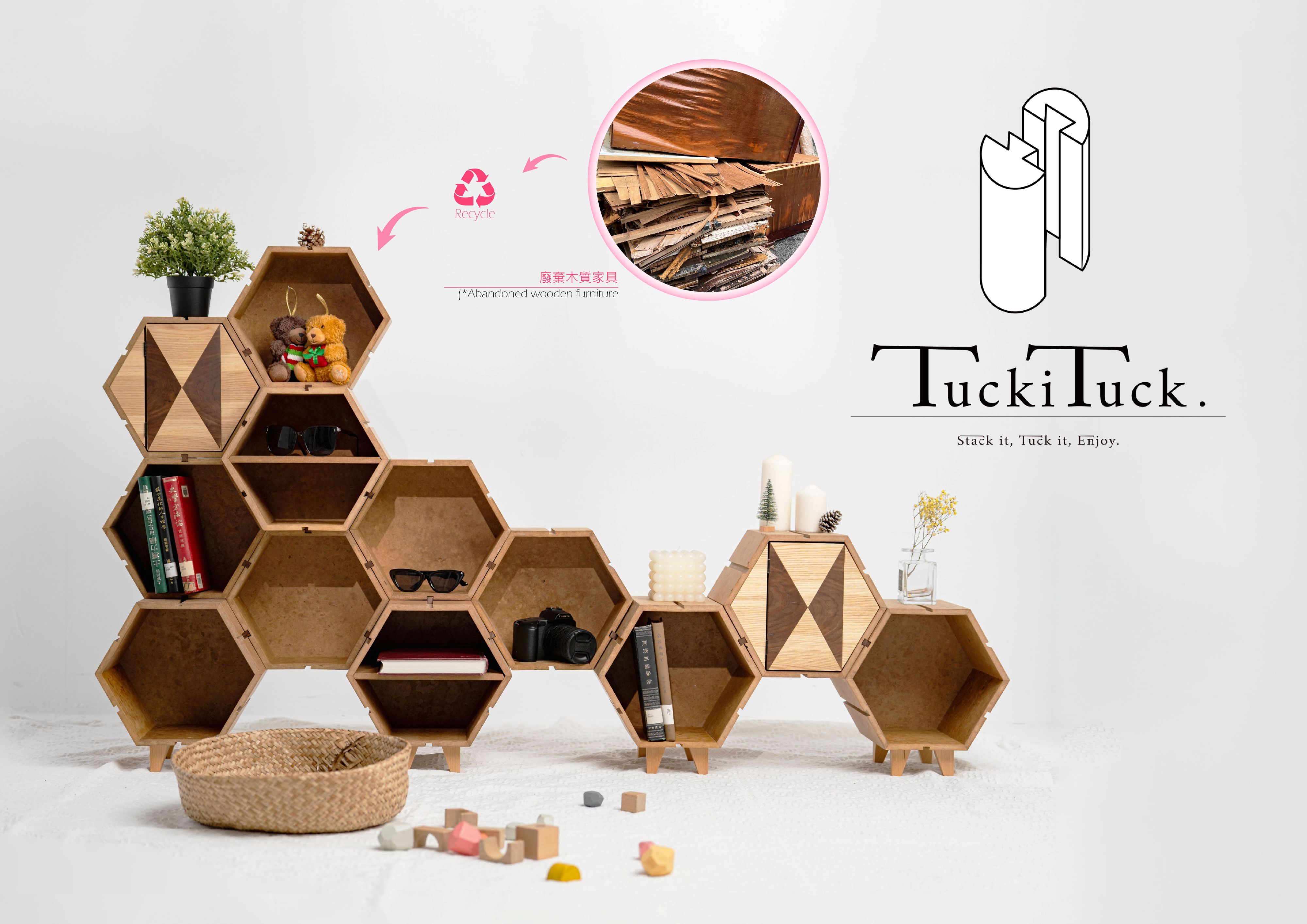
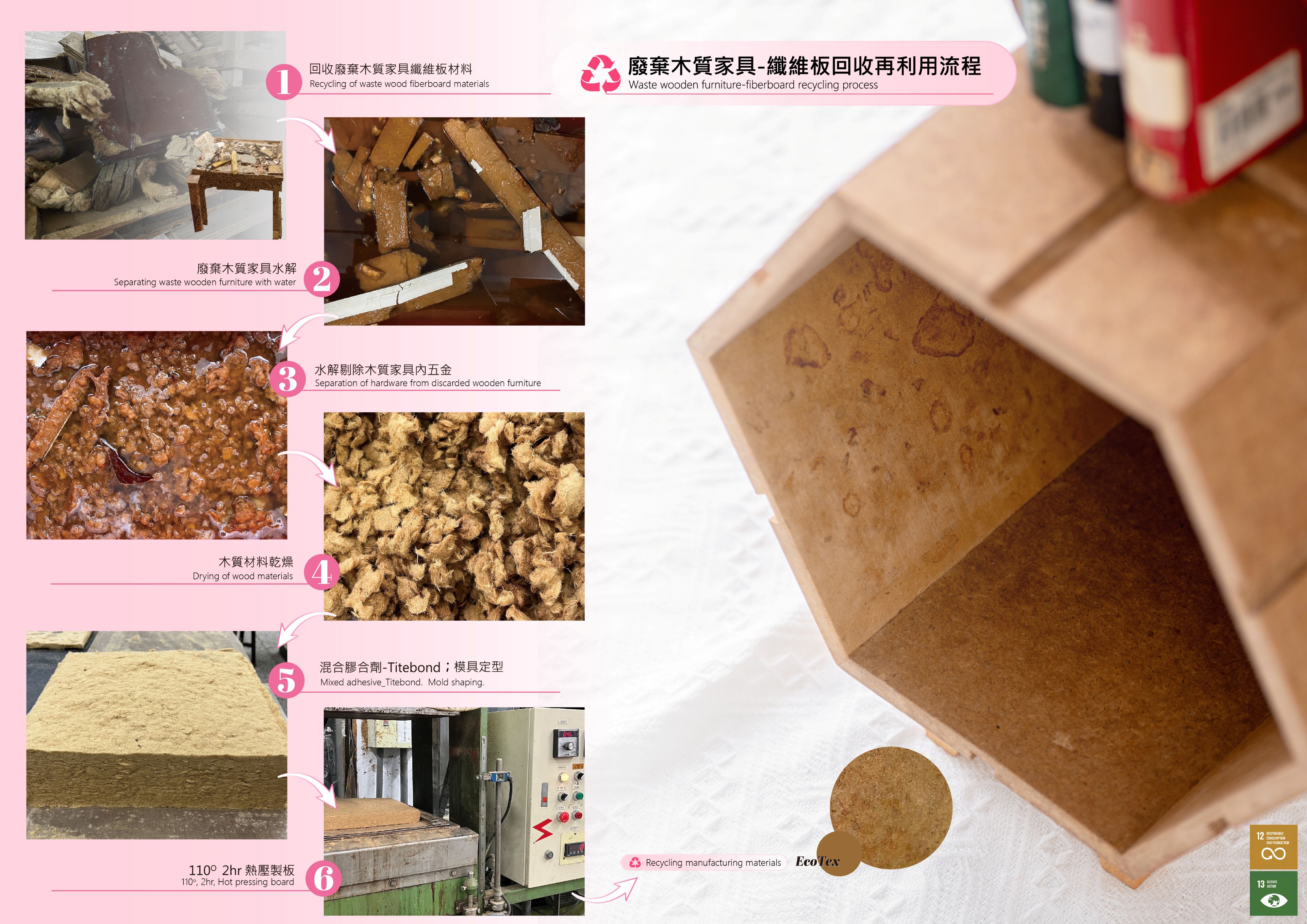
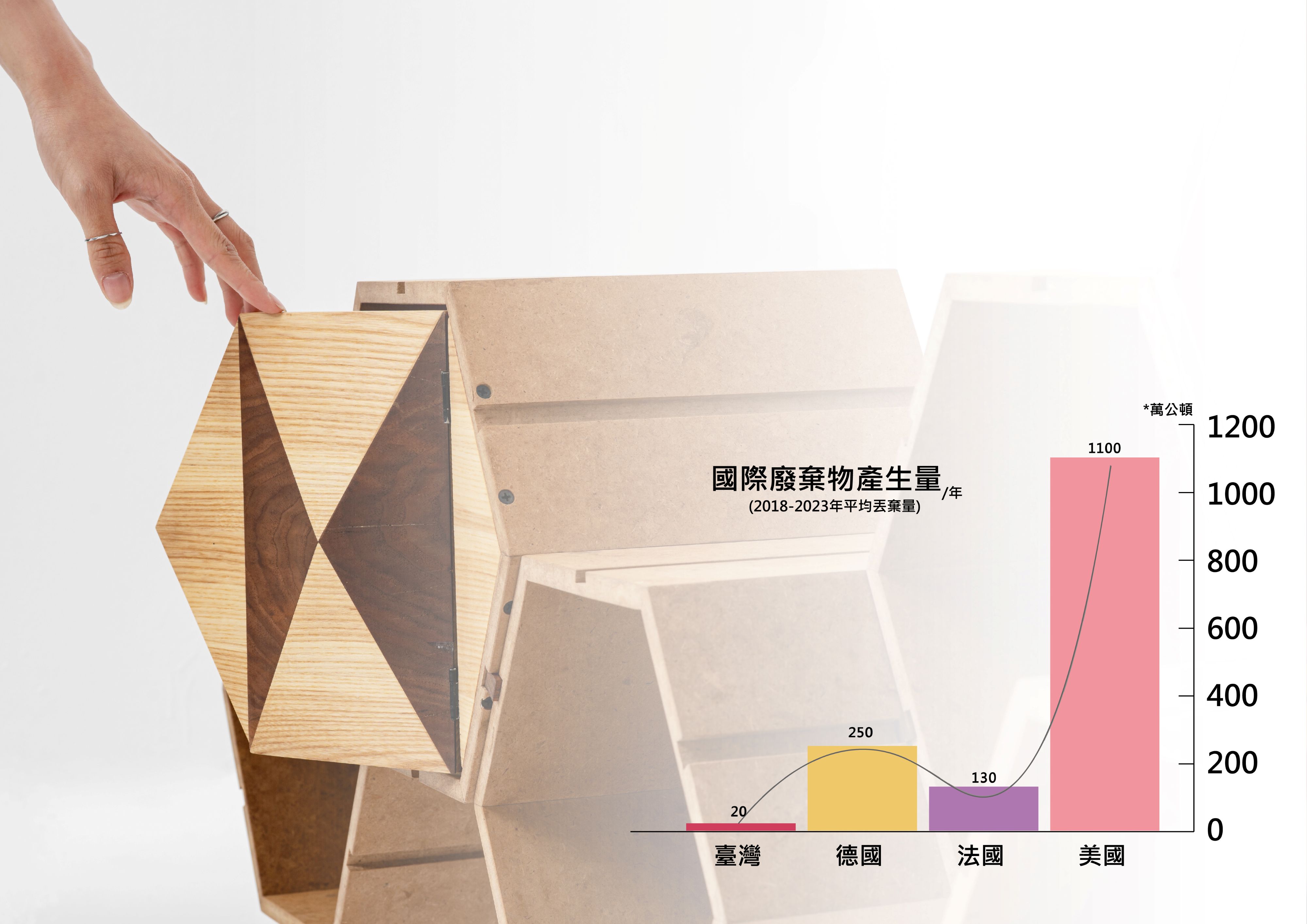
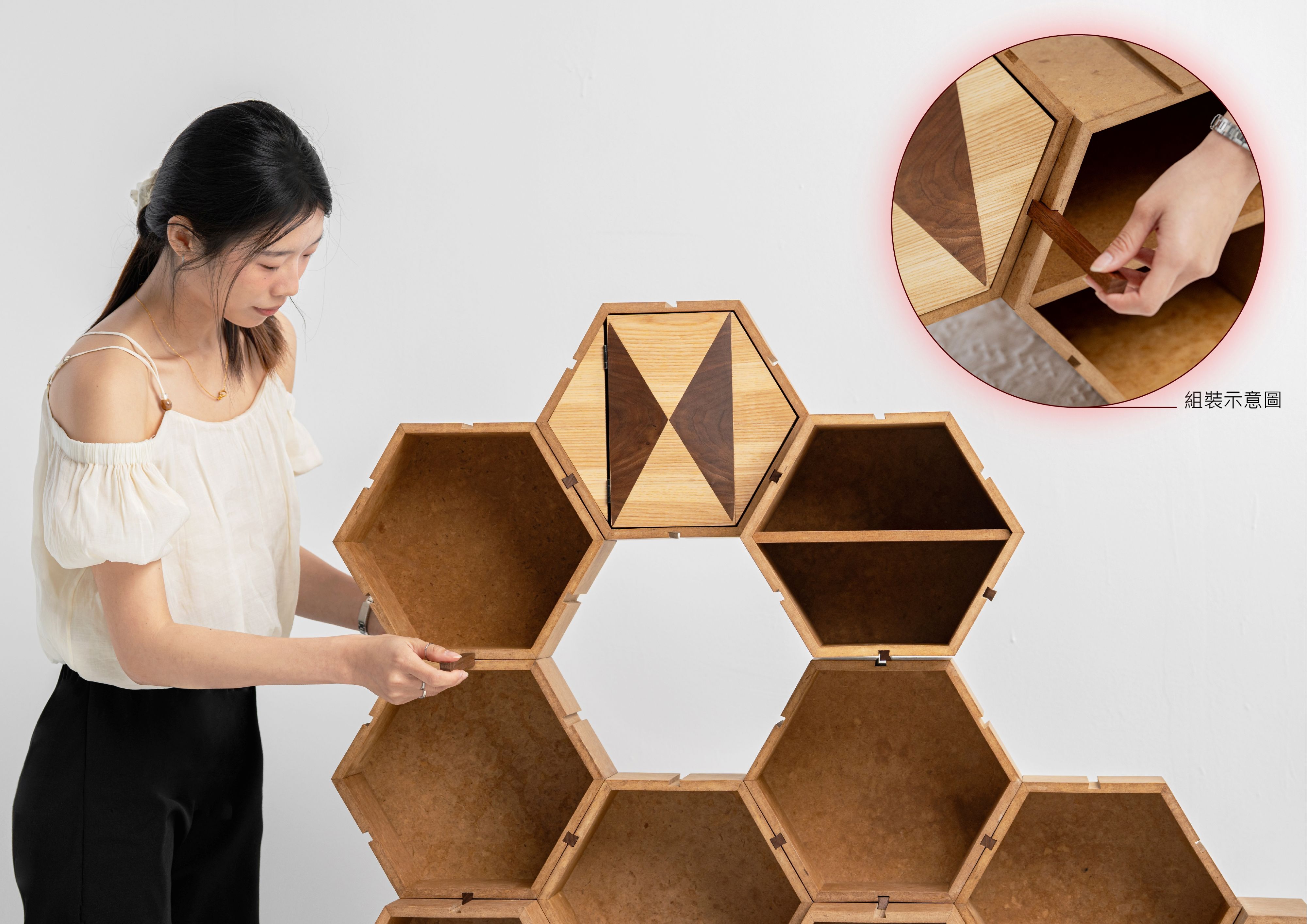
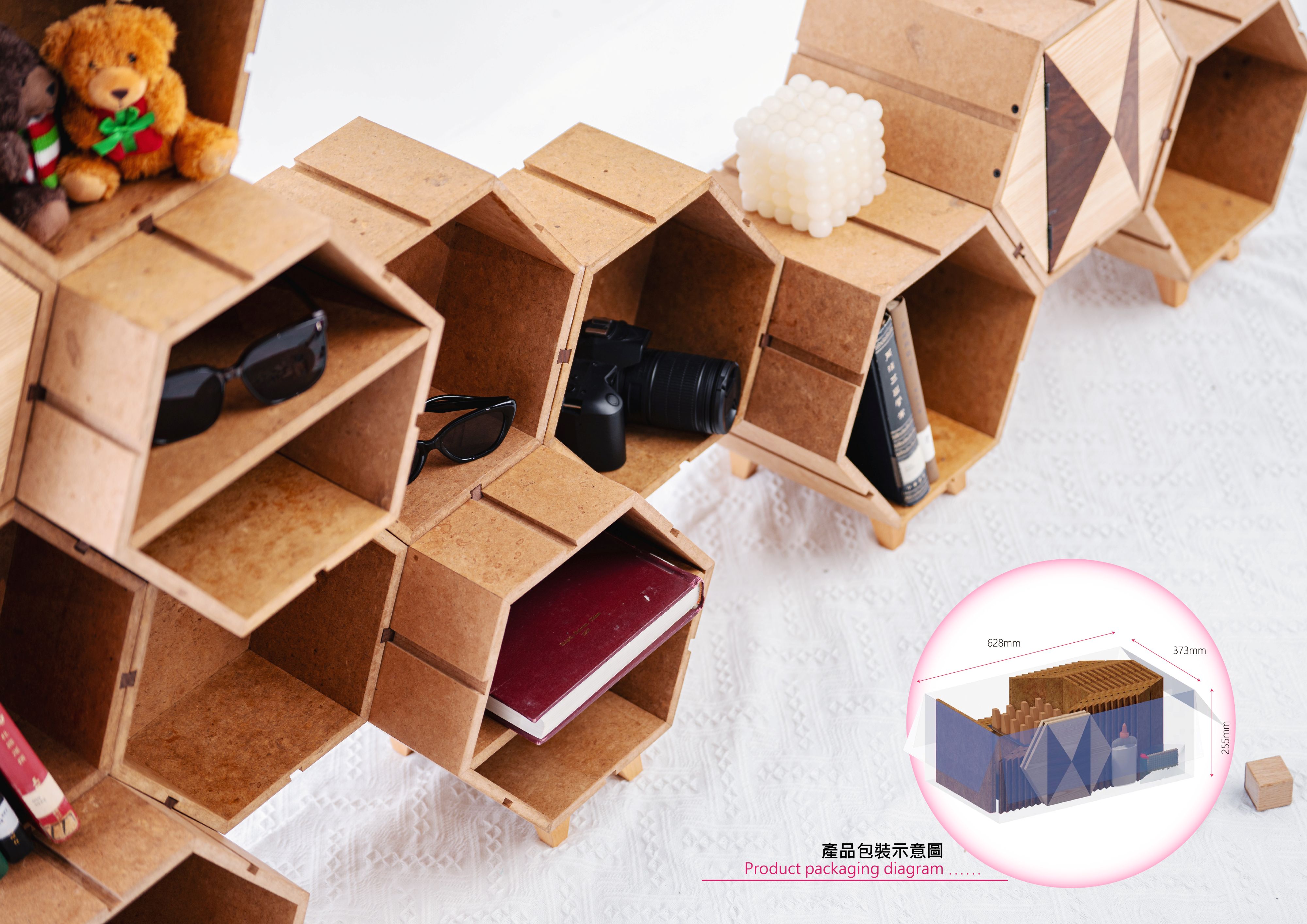
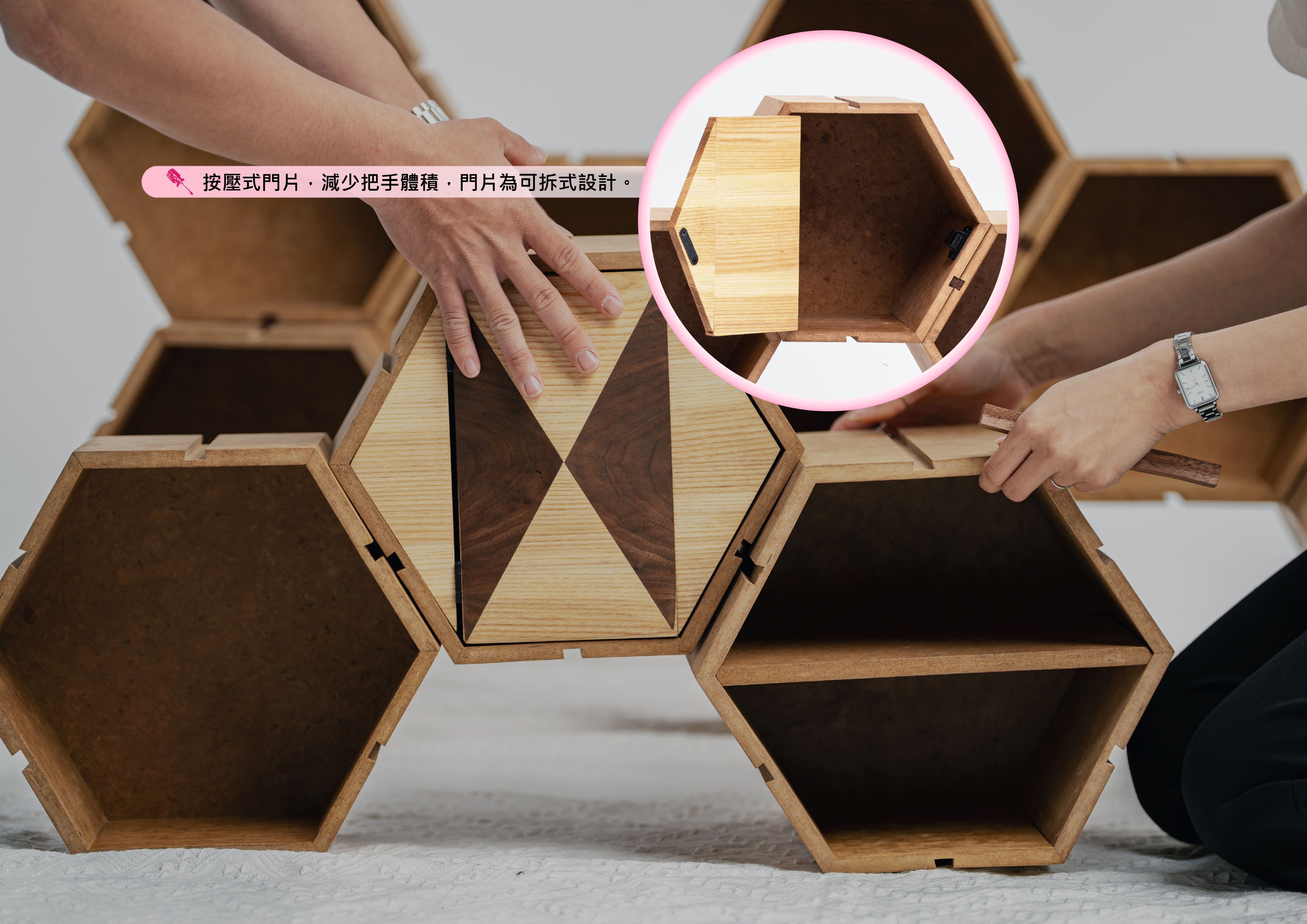
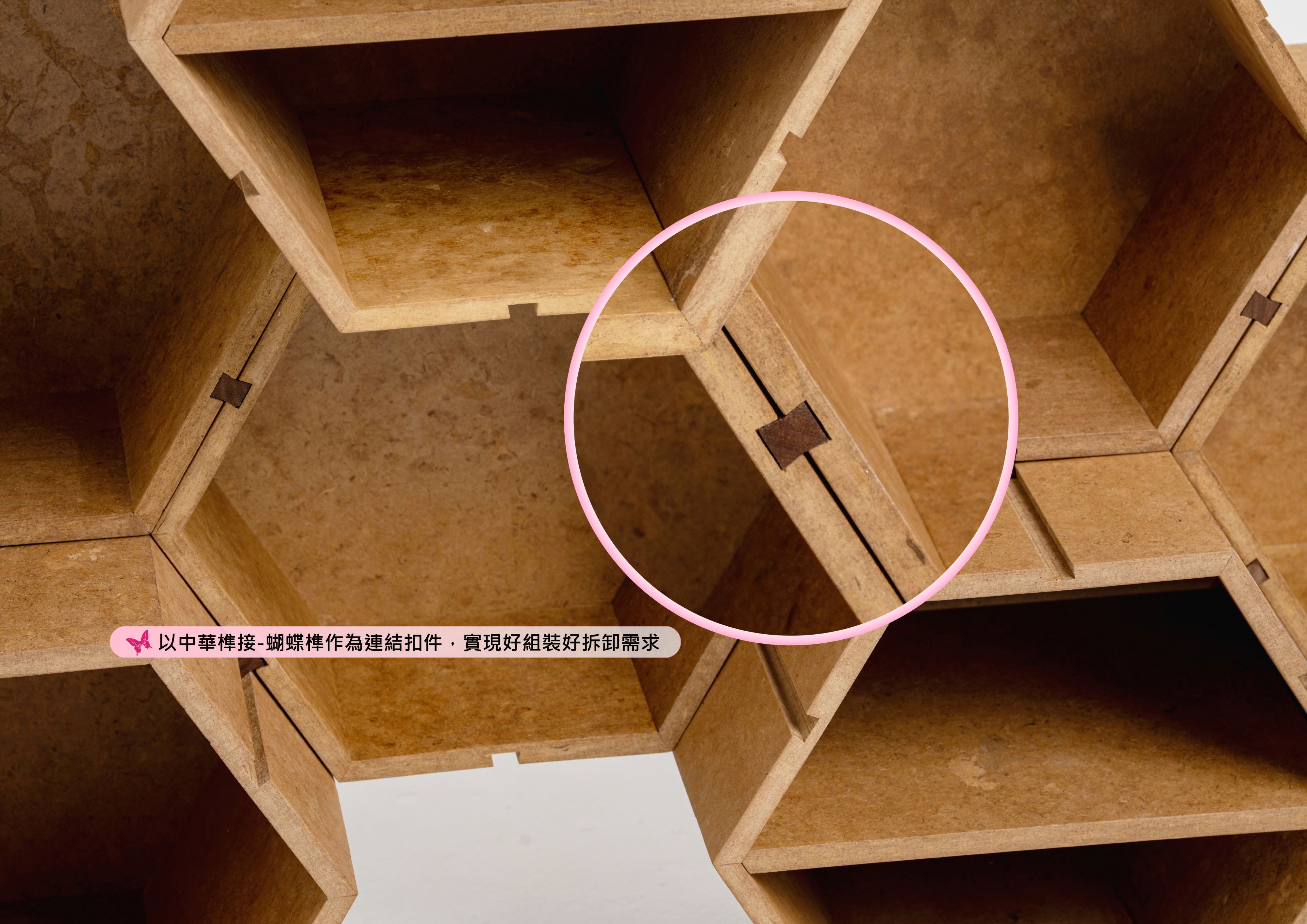
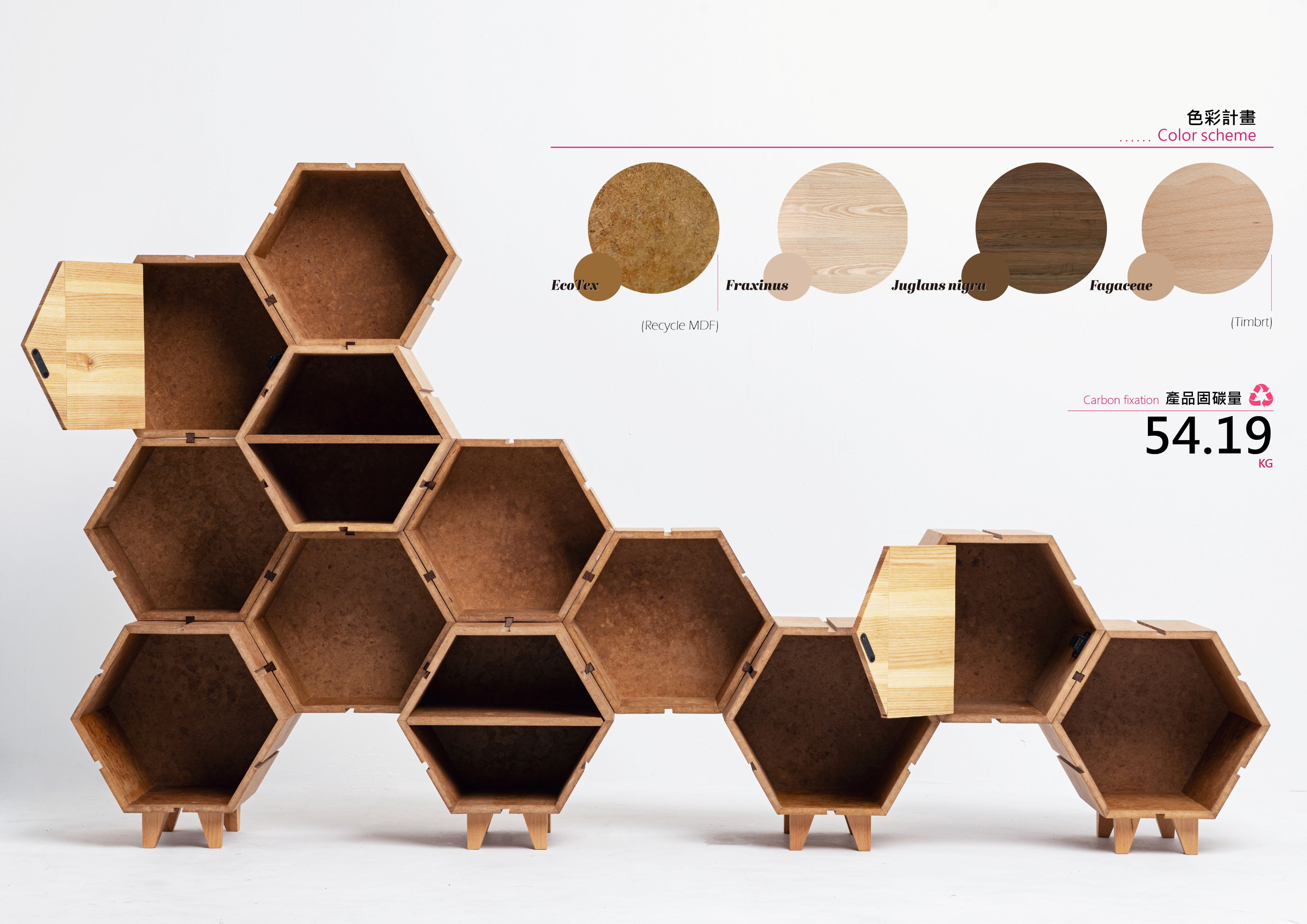
環境議題是當今全球最受關注的問題之一,它涵蓋了我們生活的方方面面,從氣候變遷到生物多樣性喪失等。為應對當前全球面臨的諸多挑戰,聯合國訂定可持續發展目標(SDGs)。大量的廢棄家具不僅佔用空間,更對環境造成嚴重的負擔,臺灣鄉間小路隨處可見的大型家具丟棄,更是被做為民間廢棄堆置所,美國大型廢棄物(家具、床墊等)產生量年均約1100萬公噸,臺灣年均也高達20萬公噸的大型廢棄物產生。廢棄家具最終的宿命是走向焚化爐,除了焚燒處理外,嘗試尋找廢棄家具的其他出路、其他處置方式。為減少廢棄家具被焚化的數量,減少大量碳排放,讓廢棄家具不再只有焚化的命運,讓廢棄材料也有新的綻放,我們將廢棄家具磨成粉,進行再利用,提高廢棄物的再生利用率。
產品設計上,運用模組化設計將主體分為獨立模塊,可自由組合、替換,提升生產效率和維護便利性。模組化設計進一步提升了家具的可持續性,讓產品可以更靈活地進行組裝、拆卸和維修,延長了家具的使用壽命,減少了整體的浪費。
通過資源的有效利用,不再只是傳統的線性經濟模式,盡可能延長產品使用壽命,實現經濟增長和環境保護的平衡。
TuckiTuck
Environmental issues are among the most pressing global concerns today, affecting all aspects of our lives, from climate change to biodiversity loss. To address the many challenges the world faces, the United Nations has established the Sustainable Development Goals (SDGs).
The large volume of discarded furniture not only takes up space but also places a heavy burden on the environment. In Taiwan, abandoned furniture is often seen along rural roads, turning these areas into informal dumping grounds. In the United States, approximately 11 million metric tons of bulky waste—such as furniture and mattresses—are generated annually, while Taiwan produces around 200,000 metric tons of bulky waste each year. Most discarded furniture ultimately ends up in incinerators.
Beyond incineration, we strive to find alternative solutions for discarded furniture. To reduce the number of furniture pieces being burned, lower carbon emissions, and give waste materials a second life, we grind discarded furniture into powder for reuse, increasing the recycling rate of waste materials.
In terms of product design, we adopt a modular approach, dividing the main structure into independent modules that can be freely assembled and replaced. This improves production efficiency and ease of maintenance. Modular design further enhances the sustainability of furniture by allowing greater flexibility in assembly, disassembly, and repair, extending the product’s lifespan and reducing overall waste.
Through the efficient use of resources, we move beyond the traditional linear economy model, striving to extend product lifespans as much as possible and achieve a balance between economic growth and environmental protection.
國立屏東科技大學 木材科學與設計系
(四年級)
曹晉銓
國立屏東科技大學 木材科學與設計系
(四年級) 指導老師 汪銘峯
龍暐